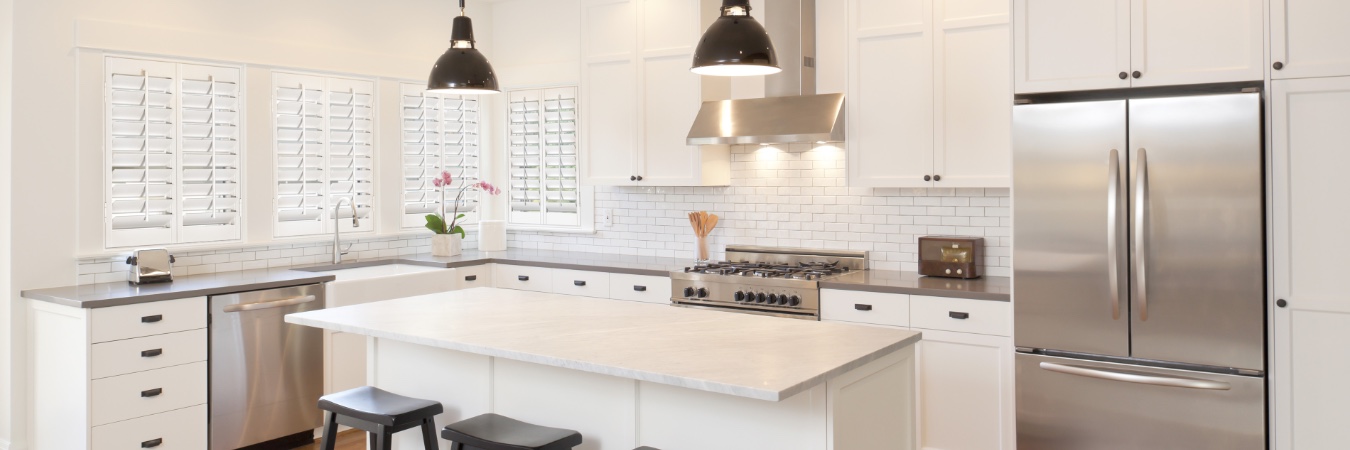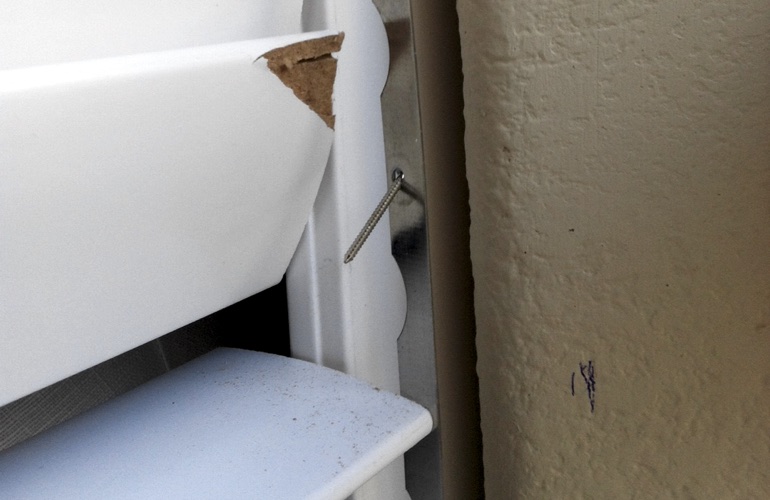
3 Ways Polywood Shutters Are Preferred Over Hollow Vinyl And Composite Shutters In
December 15, 2015
The market for plantation shutters in Dover is full of options. And when you are figuring out which non-wood shutter is the best for your home, some differences may be tough to recognize. You can easily make the wrong choice and end up ordering shutters that won’t last. Are solid polymer shutters, like our best-selling Polywood® shutters, worth more than hollow vinyl or MDF (multi-density fiberboard) shutters? Find out the three ways Polywood shutters are preferred over composite shutters in to help you decide.
1. Polywood vs Composite Shutters Durability
Polywood shutters are constructed from a first class solid polymer that ensures the most rigidity, color-retention, and durability than any other shutter money can buy. With that, the shutter louvers will not chip as time goes by. In contrast, composite shutters are made from a pressed-board core, enveloped in poly-vinyl. The vinyl enveloping the pressed board is prone to peeling from the core material readily. And this peeling is accelerated in hot, humid, and wet climates. Non-wood shutters are also available as hollow vinyl shutters. But they deteriorate the fastest because of the elements.
Both types of non-wood shutters are vulnerable to warping and deterioration under varying environmental conditions in Dover. Polywood is made with UV inhibitors that divert heat. And because heat is the main culprit in cracking the shutter louvers, Polywood is absolutely the highest quality plantation shutter you can find.
2. Polywood vs Composite Shutters Color Fastness
Polywood shutters are available in three exceptional white paints. We bake these paint finishes on each piece at hot temperatures that exceed any temperatures Dover could experience. Our patented finishing process includes UV inhibitors and ensures the color doesn’t fade.
Other types of non-wood shutters come with either low quality paint finish or no paint finish at all. In the majority of cases, the vinyl layer is the color you end up with. This finish may look good initially, but it fades as time goes by. And some hollow vinyls are painted. However, with the material easily conducting heat, this negatively affects the finish day after day.
3. Polywood vs Composite Shutters Energy Efficiency
Third party tests illustrate that Polywood shutters result in a reduction of heat transfer by up to 45% and block up to 30° of temperature. That’s how Polywood insulates up to 70% better than even the best solid wood shutter.
It’s the heat blocking properties of the solid polymer material Polywood’s made of that make these plantation shutters so energy efficient. Yet what makes Polywood stand out even more from composite shutters is the weatherstripping on the panels and louvers. All you have to do is interlock the pieces of weatherstripping while closing the panels to get an airtight seal against the weather conditions outside. You won’t find all the energy savings that Polywood offers in any composite shutter.
The Sunburst Team In Vegas’s First Hand Experience With The Durability Of Polywood Shutters
Back in 2004, Sunburst Shutters Las Vegas had Polywood shutters anchored to the sides of their trucks as part of the graphics. These trucks were parked outside and sustained the natural elements Vegas is famous for. We’re talking intense heat for five months out of the year!
These shutters had been attached to our trucks for almost 7 years. That’s when our team carried out an experiment on how well Polywood retained the color painted on it. So we dusted off the Polywood shutter that was on the truck. And we held up a new Polywood shutter next it for comparison. The color hadn’t changed one bit. We didn’t see any discoloration or fading. It further validated for our team that our paint finish is the best in the market!
And since Polywood can endure that much heat damage on the side of a truck for 7+ years, it’s without a doubt the strongest shutter for your residence in .
-1.jpg)

